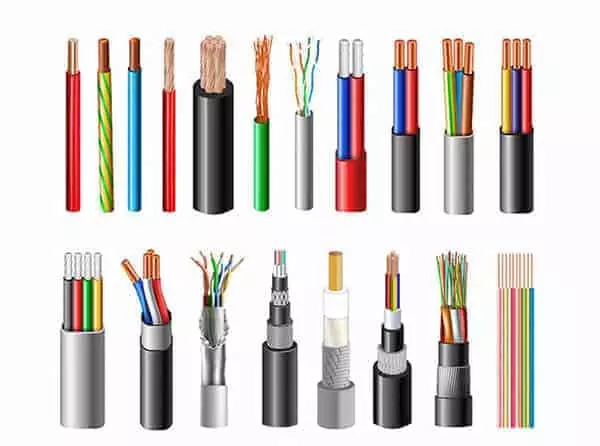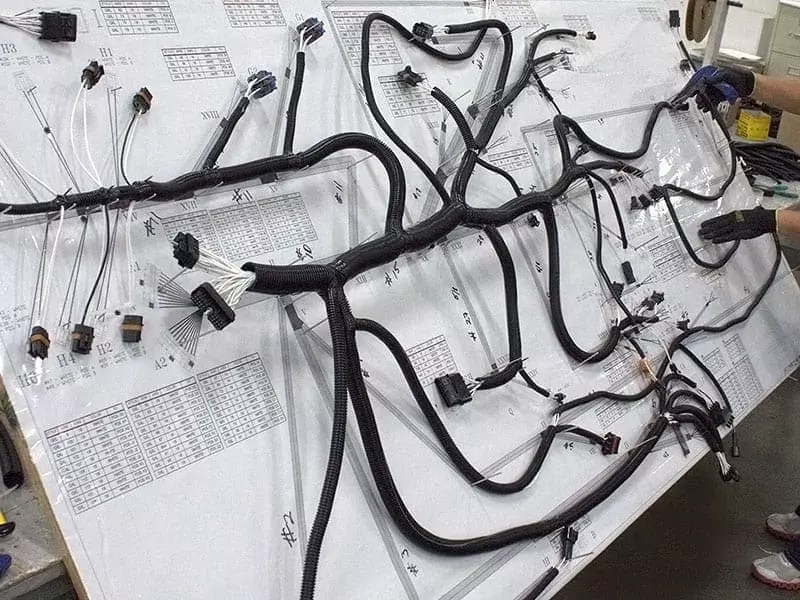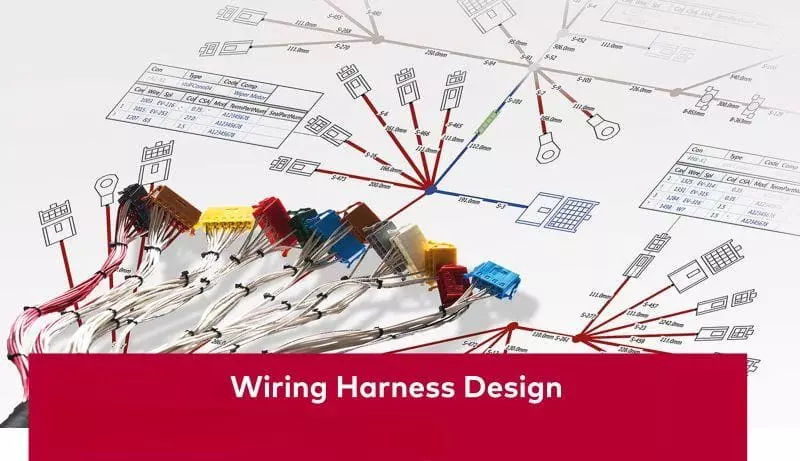5 Wire vs 4 Wire Trailer Harness: Complete Comparison for Safely
Home » 5 Wire vs 4 Wire Trailer Harness: Complete Comparison for Safely
In the trailer electrical system, the connection of Trailer Harness is directly related to the safety and functionality of the vehicle. When installing or upgrading a trailer electrical system, many vehicle owners encounter a common question: Should I choose a 4-wire or 5-wire wiring harness, and what is the difference between 5 Wire vs 4 Wire Trailer Harness?
The difference is just one wire, but there are significant differences in functionality, wiring and compatibility. Choosing the wrong one can not only cause your brake lights or turn signals to fail, but it can also make your trailer incompatible with your vehicle and interfere with normal use.
This article will take you a quick look at the difference between 5-wire and 4-wire trailer wiring harnesses, usage scenarios, wiring styles and how to choose correctly. It can help you avoid common misconceptions and tow safely without hassle.
What is a 4 Wire Trailer Harness?
4 Wire Trailer Harness is the most common and basic type of wiring used in trailer lighting systems. This type of trailer harness is typically used on small or older trailers and functions primarily for brake lights, turn signals, and taillights.
Functions represented by each of the 4 wires:
| Wire Color | Function |
|---|---|
| White | Ground |
| Brown | Tail lights, running lights, license plate light |
| Yellow | Left turn signal & brake light (combined) |
| Green | Right turn signal & brake light (combined) |

In a 4-wire harness system, the brake lights and turn signals share wiring. This means that when you hit the brakes, the left and right turn signals come on red at the same time. When you hit the steering, the system controls the lights to flash by signaling the frequency.
Common usage scenarios for 4 wire harness are as follows:
- Light trailers without independent brake control
- Older small cargo trailers, camping trailers, and simple equipment trailers.
- Scenarios without additional features such as back-up lights, electromagnetic brakes, etc.
Benefits:
- Simple wiring, easy to install
- Good compatibility, most old header plugs support 4 pin by default
- Low cost and easy to maintain
Cons:
- can’t control brake lights and turn signals independently, not suitable for modern multi-function trailers.
- Cannot connect to electromagnetic brakes, back-up lights, etc.
- May not be compatible with trailers with 5-wire or 7-wire systems.
If the trailer you plan to connect to only has basic lighting and a 4-pin socket on the rear of the vehicle, then 4 Wire Harness is usually sufficient. However, if the trailer comes with more features (e.g., electric brakes, back-up lights), then you will need to consider a 5- or 7-wire system.
What is a 5 Wire Trailer Harness?
The five wire trailer wiring harness is a slightly more advanced trailer wiring device. It has an extra wire compared to the standard four-wire harness. Depending on the vehicle and trailer setup, this extra wire can independently control the brake lights or add support for auxiliary features such as back-up lights or electronic brakes.
This system is typically used on:
- Motorcycle trailers
- Small RV or boat trailers
- Trailers with separate brake light and turn signal circuits
- Trailers that require back-up lights or auxiliary lighting
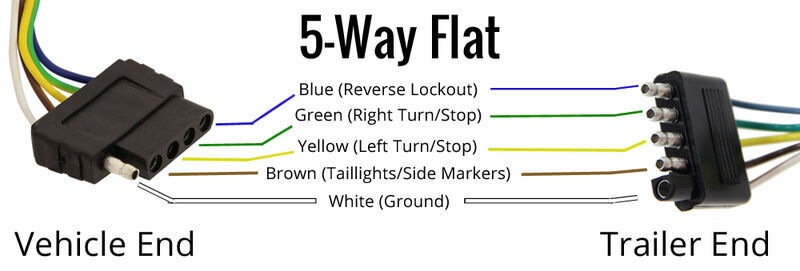
In a five-wire system, brake lights have their own dedicated circuit. Allows for more precise control and compatibility with modern automotive lighting systems.
| Wire Color | Function |
|---|---|
| White | Ground |
| Brown | Tail lights, running lights, license plate light |
| Yellow | Left turn signal |
| Green | Right turn signal |
| Blue or Red | Brake light (independent) or Reverse light / Auxiliary function |
5 Wire vs 4 Wire Trailer Harness
| Feature | 4-Wire Trailer Harness | 5-Wire Trailer Harness |
|---|---|---|
| Total Wires | 4 wires | 5 wires |
| Brake Light Control | Shared with turn signals | Separate brake signal (or reverse/auxiliary) |
| Electric Brake Support | ❌ Not supported | ✅ Supported |
| Reverse Light Support | ❌ Not supported | ✅ Supported (depends on function) |
| Typical Use Case | Small utility trailers, older models | Motorcycle trailers, campers, trailers with brakes or reverse lights |
| Wiring Complexity | Simple, easy to install | Moderate, wire identification required |
| Compatibility with Modern Vehicles | Low | High |
How can you tell if your trailer needs a 4 wire or 5 wire harness?
Many people have questions when replacing or upgrading a trailer wiring harness, “Do I need a 4-Wire or 5-Wire Trailer Harness?” It’s not complicated to determine, but you can make a quick judgment by looking at three areas: trailer configuration, vehicle plug type and functional requirements.
Factor 1: Check out the trailer's taillight design (light layout)
This is the most straightforward criterion to determine. Different tail light wiring methods determine the type of wiring harness required.
- If the trailer’s brake lights and turn signals are shared (that is, the turn signals on both sides come on red together when braking), it is a “Combined System” and can use a 4-wire harness.
- If the brake lights and turn signals are separate (red light in the center when braking, yellow light flashes on both sides when hitting the turn), it is called a “Separate System”, and will require a 5-wire harness to control them separately.
In a nutshell, test with the trailer lights on, if the left and right turn signals come on when you hit the brakes, it’s a shared brake/turn signal, available 4-wire. If a separate light comes on in the center when the brakes are applied, then you need 5 wires.
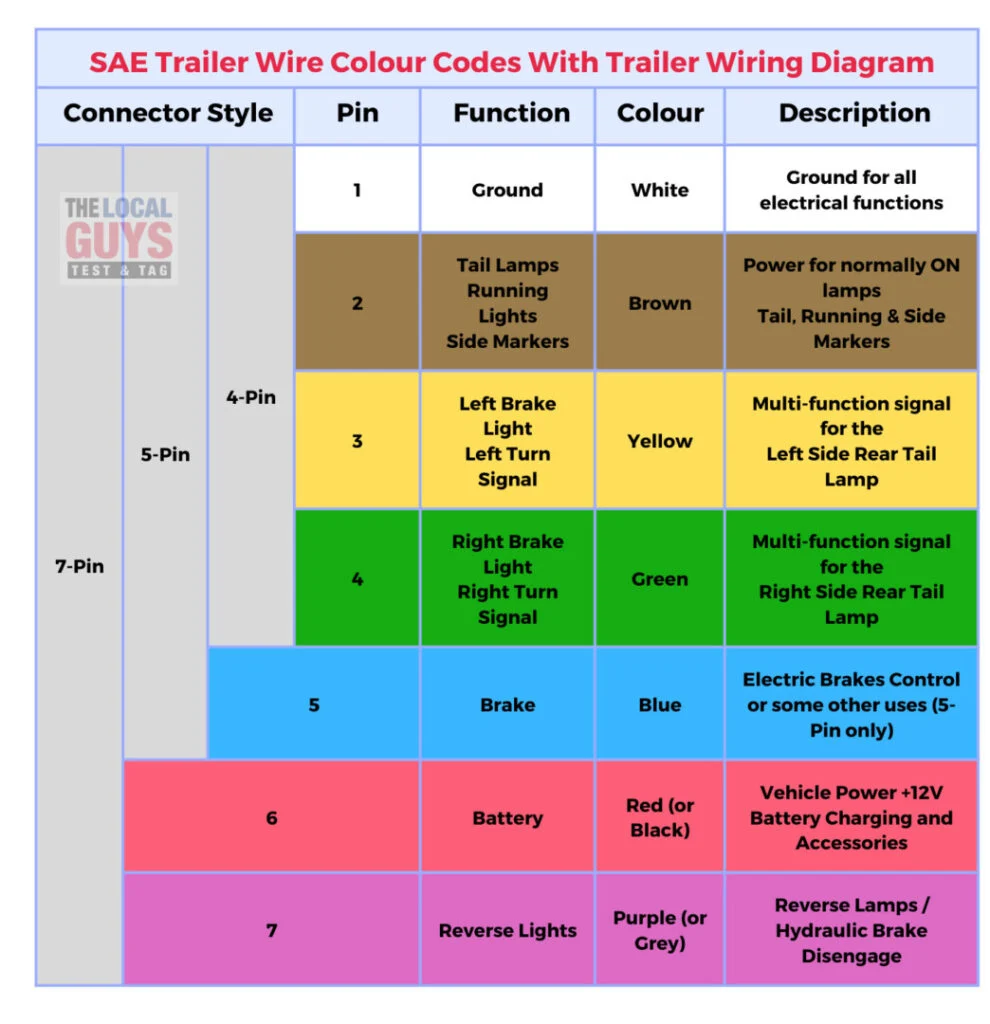
Factor 2: Check if your trailer has extra function (Electromagnetic Brake or Reverse Lights)
The 5-wire harness not only supports independent brake light control, but can also be used for the following functions:
- Electric Brake
- Reverse Lights
- Rear Fog Lights / Auxiliary Lights
If your trailer has any of the above features, you will need to use a 5-wire harness or upgrade to a 5-wire/7-wire system.
Factor 3: Check the vehicle plug type (4-pin vs 5-pin socket)
If your vehicle jack is a 4-pin trailer plug, it was designed from the factory for a 4-wire system.
✔️ with 4-wire trailer → direct connection possible
❌ with 5-wire trailer → adapter or rewire required
If your vehicle has a 5-pin or 7-pin plug (5-pin / 7-pin plug), then it usually supports more functionality and it is recommended to use a 5-wire or even 7-wire trailer harness.
Factor 4: Consider Compatibility and Future Expansion
- If you’re only hauling a light cargo trailer and don’t have electric brakes or reverse lights, using a 4-wire is the easiest and most practical option.
- But if you plan to upgrade your trailer in the future, add an electric brake system, or need safer light control, choosing a 5-wire system is more scalable and compatible.
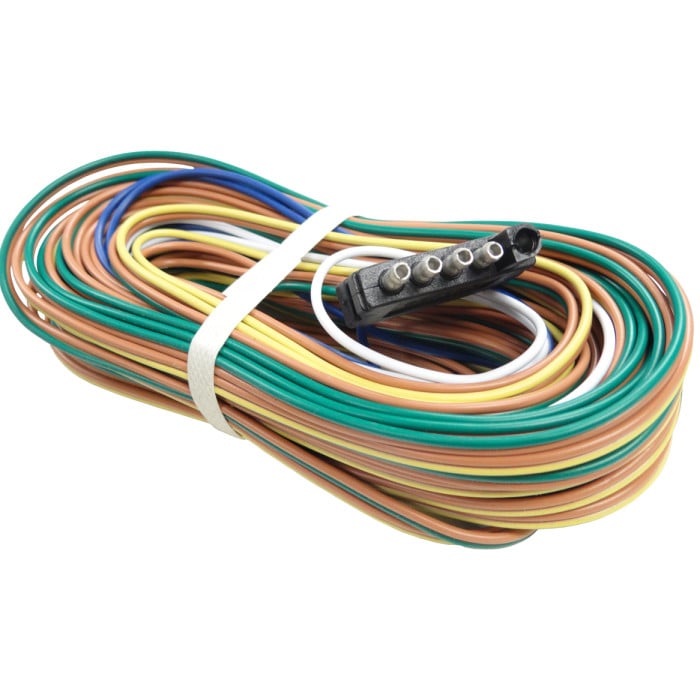
4-Wire to 5-Wire Harness Conversion and Adapter Guide
Sometimes your trailer has a 5-wire system, but the vehicle only has a 4-pin plug; or vice versa, the front end is 5-pin, but the trailer is 4-wire, then you need to do a wiring harness conversion or use an adapter to match the system. This will ensure that your lights work properly and avoid problems such as “turn signals not coming on” and “brake lights flashing at the same time”.
Two common conversion scenarios
Scenario A: Vehicle is a 4-pin plug → trailer is a 5-wire system
This is the most common situation. A 4-to-5 wire converter (signal splitter) is required to separate the combined signals (brake + turn) from the vehicle and feed them into the trailer’s brake light and turn signal lines respectively.
This solution converts the “shared brake + turn signals” on the vehicle into a separate brake light + turn signal problem.
It is important to note that the brake signal needs to be separated and properly connected to the fifth wire (blue or red) during installation.
Scenario B: Vehicle is a 5-pin plug → trailer is a 4-wire system
This is slightly simpler as the 5-pin plug itself is compatible with a 4-pin trailer, simply use a physical adapter and ignore the fifth function wire (e.g., the electric brakes or reversing lights will not be enabled).
Using a 5-pin to 4-pin flat adapter and leaving the extra function wire (blue wire) unattended solves this situation.
Note: This connection will not enable the reverse lights or electric brakes and is suitable for temporary or light trailer connections.
FAQs about 4 wire vs 5 wire harness
Q1: Can a 4-wire trailer harness be directly connected to a 5-wire trailer?
A: It cannot be connected directly, you must use a signal converter.
The 4-wire harness shares wiring for the brake lights and turn signals, while the 5-wire system controls them separately. A direct connection would result in confusing lights, such as left and right turn signals coming on together when the brakes are applied. The solution is to install a 4-to-5 wire signal splitter to properly split the combined signals into separate lines.
Q2: Is a 5-wire trailer harness safer than a 4-wire?
A: Yes in some application scenarios.
The 5-wire system provides independently controlled brake lights and turn signals and supports electromagnetic brakes, back-up lights or other auxiliary lighting, making it safer at highway speeds, in complex road conditions or at night. The 4-wire system, on the other hand, is only for basic trailers with fewer features.
Q3: How do I recognize if my trailer is a 4-wire or 5-wire system?
A: Count the wires + observe the light structure.
You can check the number of wires (number of pins) at the plug end of the trailer, or you can tell by the following:
- Observe the tail lights: are the brake lights and turn signals shared?
- After turning on the turn signals, step on the brakes to see if they conflict?
If the lights are clearly divided and there are additional reverse lights in the taillights, the odds are that it’s a 5-wire or higher system.
Add Your Heading Text Here
Whether you’re installing a trailer wiring harness for the first time or upgrading an existing system, understanding the difference between a 4-wire and a 5-wire trailer wiring harness is an important step.The 4-wire system is good for basic lighting needs with simple wiring, while the 5-wire system is more versatile and suitable for use in modern, versatile trailers.
Which wiring harness you choose depends on your trailer configuration, vehicle plug type, and whether you need to control electromagnetic brakes or back-up lights. Using the right adapter or signal converter, you can realize the compatible docking between different systems and ensure the safety of driving.
As a professional wire harness manufacturer and supplier, Linkwings is committed to providing high quality trailer wiring harnesses, adapters and connection solutions. Whether you need 4-pin, 5-pin, or 7-pin wire harnes products, we can provide you with reliable choices and technical support.
💡 Professional Advice: If you’re not sure which one your system belongs to, feel free to leave a comment or contact our technical advisors, Linkwings is always here to help!
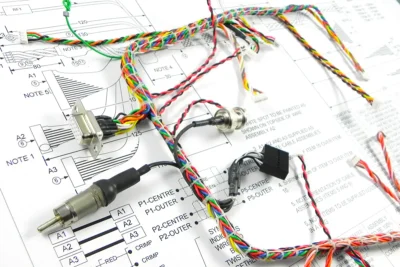
What is a Wire Harness?
Table of Contents In
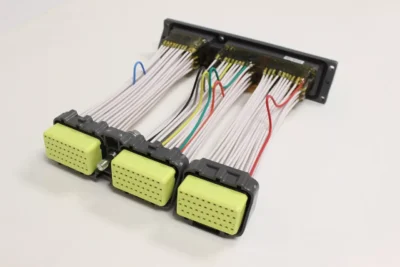
What Gauge Wire for Ecu Harness?
Table of Contents Ma
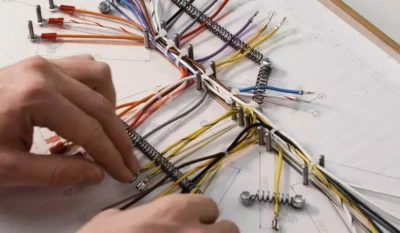
What is a Wire Harness Used For?
Table of Contents In
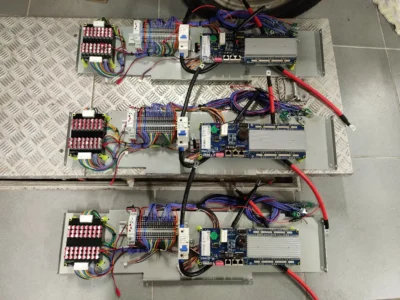
What Does a Wire Harness Do?
Table of Contents Wh

